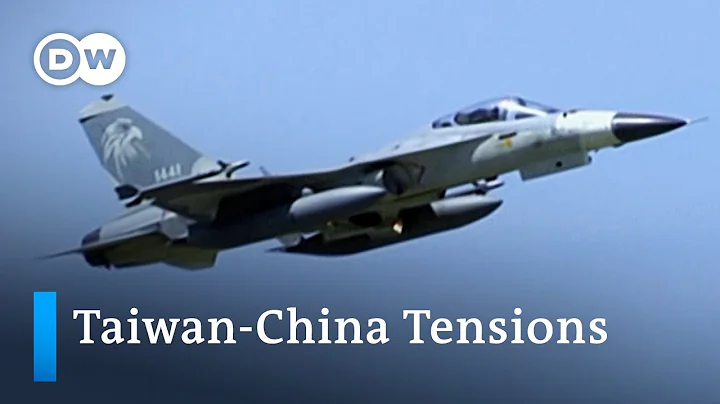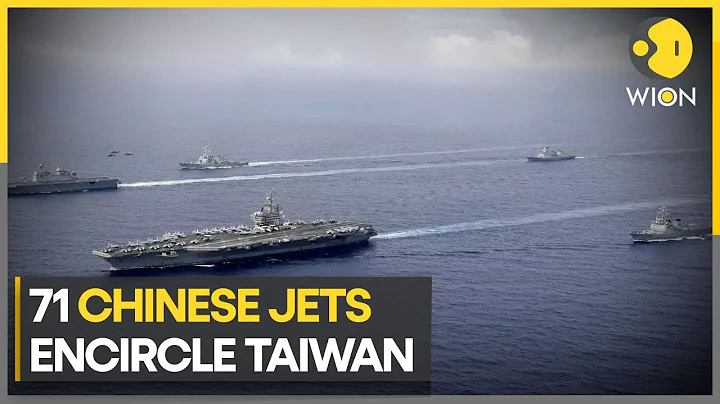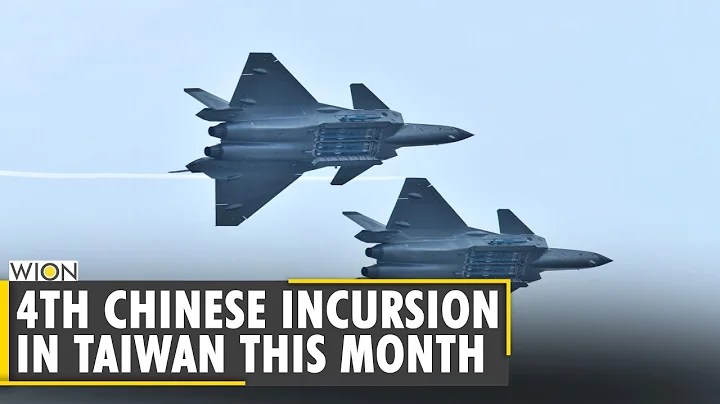Official account paid articles will be unbanned after expiration
---------------------Separation line------------

Once due to military blockade, etc. factors, leading to the cutting off of channels for external input; China's Taiwan's third-generation fighter group represented by F-16V cannot continue to operate for a long time under high-intensity use and battle damage. This is an unsolvable dead end for Taiwan’s military power, which cannot be solved by a single advanced airborne technology.
html On March 22, two F-5 fighter jets of China’s Taiwan Air Force crashed into the sea, suspected of colliding with each other during training. Among the two pilots, one, Lieutenant Pilot Luo Shanghua, died after being rescued due to ineffective treatment; the other, Captain Pan Yingchen, was found dead after missing for 28 days.
One: The proportion of crashes caused by fighter jets colliding with each other is very high, which is beyond most people’s imagination.
China Taiwan’s two F-5 fighter jets crashed due to collision with each other. In the aviation training of various countries and regions around the world, In fact, they are all relatively common types of accidents with high incidence.
For example, as of around 2010, the total number of crashes of F-15 series fighter jets reached 157, of which 1/4 crashes were caused by mutual collisions; in the crash statistics of F-18 series fighter jets, the number of crashes caused by mutual collisions The proportions are also very close. This kind of accident is also very common in non-Western countries. For example, in 2019, two Russian Su-34 collided and crashed.
The reason why such accidents are particularly common in military tactical aircraft is determined by the way they are used. In particular, various intensive formation flying and free air combat confrontation training are particularly likely to lead to collision accidents:

Picture: In the past few years, the US military has experienced crashes caused by collisions caused by aerial refueling, and the risk of aerial refueling at night is particularly high
In dense formation flying, the aircraft are very close to each other. If there are factors such as control errors or strong airflow interference, they will easily collide with each other. However, in military flights, dense formations are an unavoidable demand.
In addition to the common formation flying activities represented by aerial refueling, there have been more than one occurrences in the history of war. Single or multiple fighter jets used intensive flight to hide themselves in the radar signal characteristics of passenger planes; or multiple The formation radar characteristics of fighter aircraft look like the radar characteristics of a single large passenger plane; these means are often the key to ensuring the suddenness of action and attack.

Picture: Except for accidents during flight performances, photos or video records of the moment when fighter jets collide with each other are rarely left.
In free confrontation air combat training without pre-set various routines, especially agreed flight movements ; Pilots participating in training cannot accurately predict each other's reactions and actions, and are often prone to conflicts of judgment similar to "you go left, I go right" after a narrow encounter, leading to dangerous approaches or even collisions of aircraft. This is especially common in training where there is no altitude difference and the fighters start the confrontation head-on with equal force.
Generally speaking, F-5 collision accidents will soon disappear in Taiwan, China - similar accidents will not disappear, but the existing more than thirty F-5s are already at the end of their service and will be destroyed within 3-5 years. disuse. Apart from the fact that the five RF-5E Tiger Eye reconnaissance aircraft will remain in service for a long time, there will soon be no more high-risk F-5 flights.

Picture: China’s Taiwan Air Force’s RF-5E reconnaissance aircraft
In addition, this type of accident also involves a very common management issue: Generally speaking, if a unit’s training style is particularly flexible, aggressive, and fierce; If this is avoided, a certain tendency of rough driving and rough flying that ignores safety principles will emerge among pilots.
It can be said that there is indeed a contradiction between completely liberating the subjective initiative of pilots and the performance limit potential of the aircraft, and ensuring the safety of training as much as possible, and this contradiction will continue to trouble the air forces of various countries and regions in the future. At present, it is almost impossible to solve it through purely technical means.
2: China’s Taiwan Air Force’s F-16 can theoretically significantly reduce the probability of training crashes through new technologies
Under the current technical constraints, it is necessary to enable fighter jets to design their own functions to avoid air combat confrontation training and intensive formation flying. Collision accidents caused by other factors are still unrealistic.
But for crashes caused by other reasons, they are mainly caused by the pilot's illusion or short-term loss of consciousness, causing the aircraft to hit the ground or the sea; now new automatic protection technology has emerged, which can enable the fighter jet to protect itself before crashing. Automatically forcibly take over the flight, pull up the aircraft, change the flight path to avoid collision, and avoid aircraft crash and fatalities.

Picture: The result of a fighter jet crashing into a mountain is usually not able to leave such a complete wreckage
As advanced flight control such as the full-authority digital telex system becomes practical on fighter jets, the United States is conducting research on integrating fully automatic collision avoidance technology into fighter jets. In the 1980s, research work with practical significance began, which lasted for more than 30 years. Lockheed Martin , NASA, and the U.S. Air Force Laboratory have played a crucial role in this.
This new system, called AGCAS, has been first equipped by the US military in recent years and has saved many fighter aircraft. For example, in 2016, the U.S. military released the record and HUD video of an accident:
When an F-16 was performing a high-G maneuver, the pilot was unable to withstand the hypoxic effect on the brain caused by high gravity and fell into a coma. The fighter jet flew directly toward the aircraft. The mountain peak crashed over. When it was about to crash, the collision avoidance protection system intervened in the flight control of the fighter plane, forcing the fighter plane to pull up and climb to a safe altitude with a high overload close to the aircraft's maneuverability limit.
This is the fourth aircraft that the US military has saved since the collision avoidance and crash prevention system was put into service in September 2014.
In recent years, fighter jets of China’s Taiwan Air Force, including Mirage 2000 and F-16, have crashed due to in-flight illusions (such as the inability to distinguish between the sky and the sea) and loss of consciousness due to high overload.

Picture: IDF fighter jets in Taiwan, China

Picture: Mirage 2000 fighter jets in Taiwan, China
The new collision avoidance and anti-crash system requires radar, navigation and other systems and flight control systems to achieve a high level of integrated control. , at this stage, it not only requires advanced hardware such as full-authority digital fly-by-wire flight control as a necessary foundation, but also requires the United States to fully grasp the relevant design of the aircraft and have complete authority to improve it. Therefore, it is impossible to appear in the Taiwan Air Force. On models other than F-16.

Picture: Taiwan’s F-16
The current F-16 fleet of China’s Taiwan Air Force consists of two parts. One part is 66 F-16Vs that have not yet completed production and delivery. They are the latest modifications of the current F-16 family. According to Western news reports that a collision avoidance and crash avoidance system is standard. As the main force in active service, there are 141 F-16 block20, which will be gradually upgraded to the F-16V standard in the future. The
collision avoidance and anti-crash system can effectively improve safety issues in training and save a considerable number of pilots and fighter jets; therefore It is very worthy of attention, after all, it targets the pain points that all air armed forces will encounter.
But from an overall and long-term perspective, the changes it can bring are still far from enough to affect the balance of military power.
Conclusion:
In the development of fighter jets after World War II, fighter jets have become more and more complex, with more and more airborne equipment; now no small or medium-sized country/region has the ability to independently complete the design and development of advanced fighter jets. manufacture.
China's Taiwan itself is just an island region with a very limited area and population. It does not have, and will never have in the future, a truly complete fighter aircraft research and development capability. The maintenance of its military power completely depends on external input.
Once the channels for external input are cut off due to factors such as military blockade, Taiwan's third-generation fighter jet group represented by the F-16V will not be able to continue to operate for a long time under high-intensity use and battle damage. This is the unsolvable dead end of Taiwan's military power, which cannot be solved by a single advanced airborne technology.





















